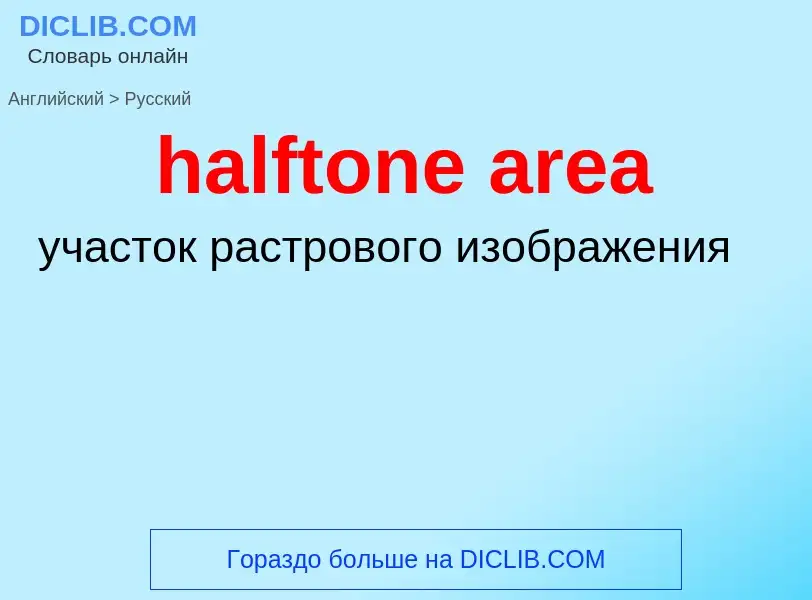Перевод и анализ слов искусственным интеллектом ChatGPT
На этой странице Вы можете получить подробный анализ слова или словосочетания, произведенный с помощью лучшей на сегодняшний день технологии искусственного интеллекта:
- как употребляется слово
- частота употребления
- используется оно чаще в устной или письменной речи
- варианты перевода слова
- примеры употребления (несколько фраз с переводом)
- этимология
halftone area - перевод на русский
- closed area
- controlled area
- controlled access area
- fenced area
- fingerprint pattern area
- high risk area
- inaccessible area
- key area
- limited area
- logically protected area
- monitored area
- physically protected area
- protected area
- restricted area
- secret area
- secure area
- secure storage area
- security-sensitive area
- survey area
- target area
- user area
['e(ə)riə]
общая лексика
область
район
зона
ареал
область обитания
площадь
пространство
участок
область, участок
область памяти, часть экрана
сфера деятельности
область специализации
медицина
место
плоскость
строительное дело
площадь (помещения, поверхности, фигуры и т. п.)
площадка
внутренний двор
пространство, зона
приямок (напр. у окна подвального этажа)
нефтегазовая промышленность
поверхность
зона, район, область, территория, участок
существительное
общая лексика
площадь
пространство
участок
район
область
зона
сфера (деятельности)
область (исследования и т. п.)
размах
охват
сфера
проход
ведущий к входу в подвал
приямок перед окнами подвального этажа
площадь, пространство
край
размах, сфера
дворик ниже уровня улицы, через который проходят в полуподвал
анатомия
поле (коры головного мозга)
синоним
общая лексика
единица площади
2) область (применения)
- area under crops
- area under curve
- area of ambiguity
- area of arrival
- area of departure
- area of destination
- area of substantial unemployment
- abandoned area
- accounting area
- administrative area
- arable area
- assisted area
- bad risk area
- beef-producing area
- blighted area
- built-up area
- catchment area
- census area
- central public area of bank
- crop area
- currency area
- delivery area
- depressed area
- development area
- dispersion area
- dollar area
- effective area
- enumeration area
- European free trade area
- farming area
- forage area
- franc area
- free trade area
- grass area
- gray area
- industrial area
- inland area
- labor-shortage area
- line area
- major producing area
- mapped area
- market area
- maximum work area
- metropolitan area
- mixed farming area
- monetary area
- natural area
- natural service area
- natural trading areas
- neglected area
- nonpermit area
- normal work area
- overshopped area
- overstored area
- pasture area
- pilot census area
- planted area
- ploughed area
- port area
- power supply area
- primary trading area
- productive area
- residential area
- sales area
- selling area
- service area
- shaded area
- shopping area
- single-crop area
- sown area
- sterling area
- suburban area
- tilled area
- tracted area
- treated area
- tributary area
- underprivileged areas of city
- unitary area
- unmapped area
- unproductive area
- urban settlement area
- work area
Википедия
Halftone is the reprographic technique that simulates continuous-tone imagery through the use of dots, varying either in size or in spacing, thus generating a gradient-like effect. "Halftone" can also be used to refer specifically to the image that is produced by this process.
Where continuous-tone imagery contains an infinite range of colors or greys, the halftone process reduces visual reproductions to an image that is printed with only one color of ink, in dots of differing size (pulse-width modulation) or spacing (frequency modulation) or both. This reproduction relies on a basic optical illusion: when the halftone dots are small, the human eye interprets the patterned areas as if they were smooth tones. At a microscopic level, developed black-and-white photographic film also consists of only two colors, and not an infinite range of continuous tones. For details, see film grain.
Just as color photography evolved with the addition of filters and film layers, color printing is made possible by repeating the halftone process for each subtractive color – most commonly using what is called the "CMYK color model". The semi-opaque property of ink allows halftone dots of different colors to create another optical effect: full-color imagery. Since the location of the individual dots cannot be determined exactly, the dots partially overlap leading to a combination of additive and subtractive color mixing called Autotypical Color Mixing.



.jpg?width=200)
![Purple Screens used in [[offset printing]]. Angles 90°, 105°, 165°. Purple Screens used in [[offset printing]]. Angles 90°, 105°, 165°.](https://commons.wikimedia.org/wiki/Special:FilePath/Screens. Halftone process in printing. img 01.jpg?width=200)

